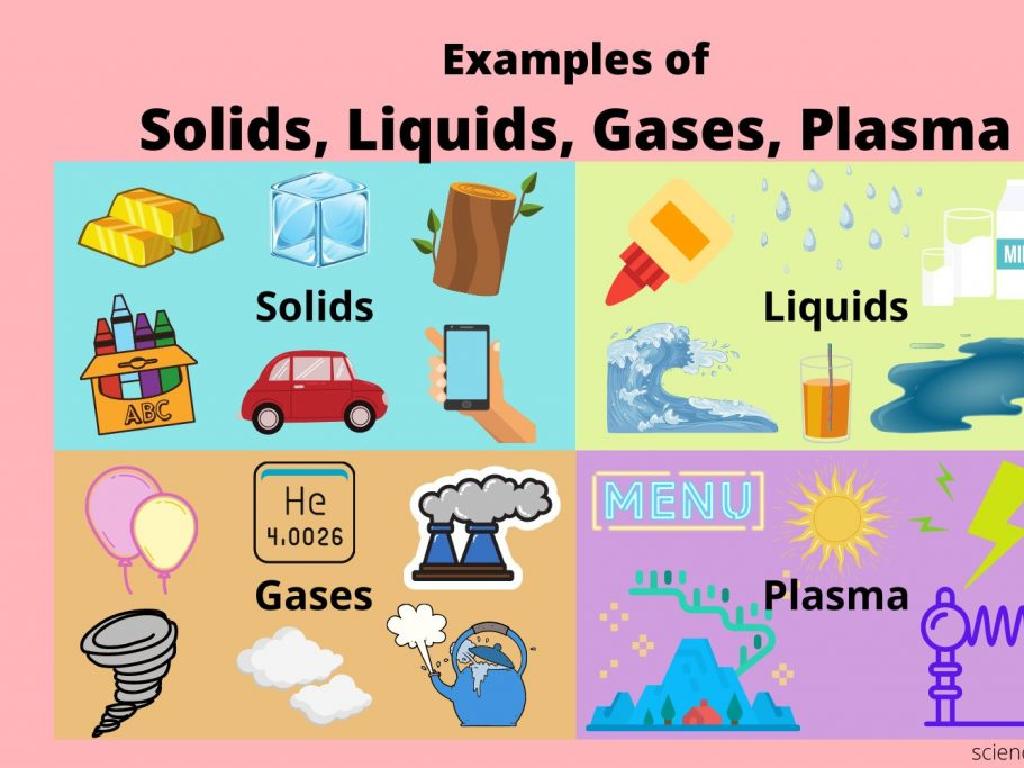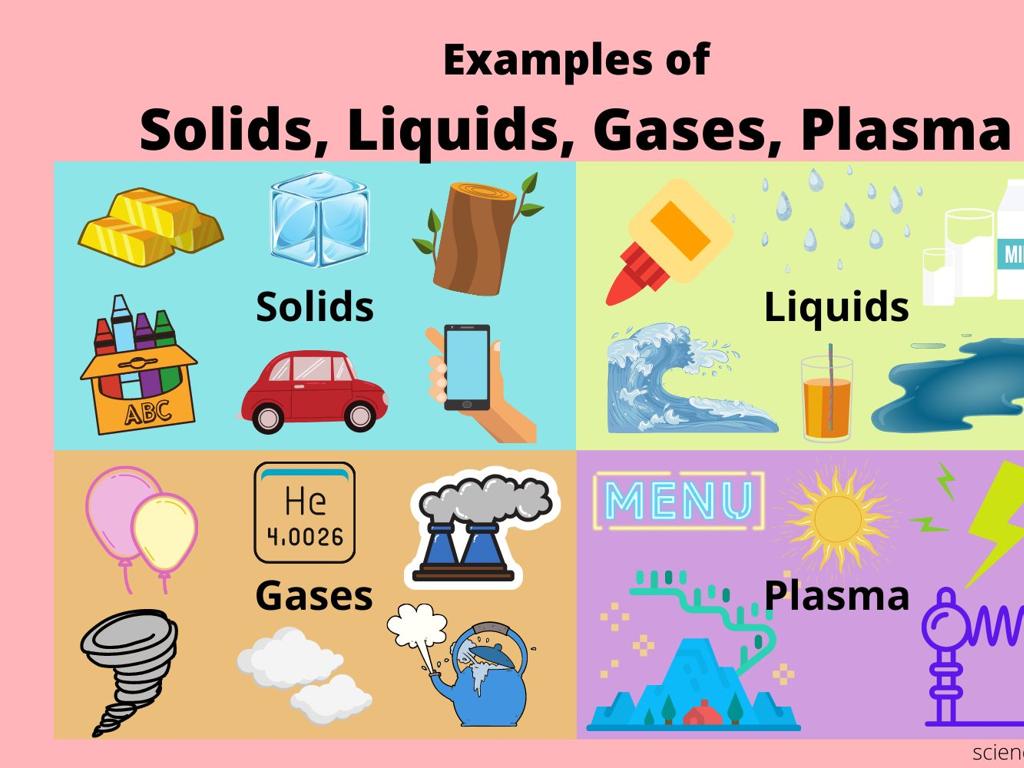Use Coordinating Conjunctions
Subject: Language arts
Grade: Fifth grade
Topic: Organizing Writing
Please LOG IN to download the presentation. Access is available to registered users only.
View More Content
Coordinating Conjunctions in Writing
– Understanding conjunctions
– Conjunctions join words, phrases, or clauses
– Importance in writing
– They make writing flow smoothly and clearly
– Examples of coordinating conjunctions
– For, And, Nor, But, Or, Yet, So (FANBOYS)
– Practice using them in sentences
– ‘I like apples, but my sister likes oranges.’
|
This slide introduces the concept of coordinating conjunctions to the students, explaining their role in connecting different parts of a sentence to improve coherence and readability. Emphasize the importance of conjunctions in creating complex, interesting sentences that are essential for effective writing. Provide examples using the acronym FANBOYS to help students remember the seven coordinating conjunctions. Encourage students to come up with their own sentences using each conjunction to reinforce their understanding. In the next class, review their sentences and discuss how the conjunctions change the relationship between the ideas in their sentences.
Coordinating Conjunctions in Writing
– What are coordinating conjunctions?
– They link words, phrases, or clauses together.
– Remember FANBOYS
– For, And, Nor, But, Or, Yet, So – key conjunctions.
– Examples in sentences
– ‘I wanted to play, but it was raining.’
– Practice using FANBOYS
– Combine sentences using each of the FANBOYS.
|
This slide introduces coordinating conjunctions, which are essential for combining ideas in writing. Start by explaining that these conjunctions help in linking similar grammatical elements. Use the acronym FANBOYS to help students remember them. Provide clear examples for each conjunction in a sentence to illustrate their use. Encourage students to come up with their own sentences using FANBOYS. As an activity, have students practice writing sentences or short paragraphs where they combine ideas using different coordinating conjunctions. This will help solidify their understanding and application of the concept.
Coordinating Conjunctions: ‘And’ & ‘But’
– ‘And’ joins similar ideas
– Use ‘and’ to connect closely related items: ‘I like apples and oranges.’
– ‘But’ indicates a contrast
– Use ‘but’ to show opposition: ‘I like apples, but not on Tuesdays.’
– Practice crafting sentences
– Enhance writing with conjunctions
|
This slide introduces the use of ‘and’ and ‘but’ as coordinating conjunctions to organize writing. ‘And’ is used to combine similar ideas, thoughts, or items, which helps in adding more information to a sentence without creating a run-on. ‘But’ is used to show contrast between two ideas, which can add complexity and depth to writing. Encourage students to think of their own examples where they might use ‘and’ to add information or ‘but’ to show contrast. During the class activity, guide them to create sentences using these conjunctions to reinforce their understanding and to see how conjunctions can make their writing clearer and more interesting.
Coordinating Conjunctions: ‘Or’ & ‘Nor’
– ‘Or’ presents a choice between options
– ‘Nor’ links two negative possibilities
– Understand when to use ‘or’ and ‘nor’
– Use ‘or’ for choices: ‘Do you want an apple or a banana?’
– Practice time: Choose ‘or’ or ‘nor’
– Use ‘nor’ when two things are not true: ‘I neither like onions nor garlic.’
|
This slide introduces the coordinating conjunctions ‘or’ and ‘nor’, which are used to connect words, phrases, or clauses. ‘Or’ is used to present options or alternatives, while ‘nor’ is used to connect two negative statements. It’s important to explain that ‘nor’ is typically preceded by ‘neither’ when it starts a sentence or follows another negative statement. During practice time, provide students with sentences where they must decide whether to use ‘or’ or ‘nor’. For example, ‘Would you like cake ___ ice cream?’ versus ‘He doesn’t like spinach ___ broccoli.’ Encourage students to create their own sentences using ‘or’ and ‘nor’ to solidify their understanding.
Coordinating Conjunctions: For, Yet, So
– ‘For’ shows reasons
– ‘I studied hard, for I wanted to pass.’
– ‘Yet’ shows contrast
– ‘She was tired, yet she finished the race.’
– ‘So’ shows effect
– ‘It rained hard, so we stayed indoors.’
– Practice with examples
|
This slide introduces students to the coordinating conjunctions ‘for’, ‘yet’, and ‘so’, which are used to connect clauses in a sentence. ‘For’ is used to explain the reason behind an action. ‘Yet’ is used to introduce a contrasting idea that still follows logically from the first clause. ‘So’ is used to indicate the effect or result of the action in the first clause. Provide students with example sentences to illustrate how each conjunction is used. Encourage them to create their own sentences using these conjunctions to solidify their understanding. In the next class, students can share their sentences and discuss the effectiveness of the conjunctions used.
Conjunctions in Action!
– Conjunctions connect ideas
– Activity: Find the conjunctions
– Look at sentences and spot the connecting words
– Discuss conjunctions’ role
– Talk about why the writer used those conjunctions
– How conjunctions affect meaning
– See how sentences change with different conjunctions
|
This slide introduces the concept of coordinating conjunctions and their role in connecting ideas in writing. The activity encourages students to identify conjunctions in given sentences, fostering an understanding of how conjunctions are used to combine thoughts and information. After identifying the conjunctions, lead a discussion on why certain conjunctions were chosen and how they influence the overall meaning of the sentences. This will help students see the importance of word choice in writing. For the activity, provide sentences with and without conjunctions to compare, and have students create their own sentences using different conjunctions to see the effect on meaning.
Your Turn to Write with FANBOYS!
– Write sentences using FANBOYS
– Use ‘For, And, Nor, But, Or, Yet, So’ to connect ideas
– Pair up and share your sentences
– Exchange your ideas with a classmate
– Discuss the role of conjunctions
– How do FANBOYS make sentences clearer?
– Understand organizing thoughts
|
This activity slide encourages students to apply their knowledge of coordinating conjunctions (FANBOYS) by writing their own sentences. Each student should create sentences that demonstrate the use of ‘For, And, Nor, But, Or, Yet, So’ to connect thoughts and ideas. After writing, students will pair up to share and discuss their sentences, fostering peer learning. The class discussion will focus on how conjunctions help in organizing writing and clarifying thoughts. Teachers should guide the discussion by providing examples and ensuring that each conjunction is correctly used in the context of the sentences shared. This exercise will help solidify the students’ understanding of how to use conjunctions to structure their writing effectively.
Class Activity: Conjunction Junction
– Form small groups for story creation
– Use all seven coordinating conjunctions
– For, And, Nor, But, Or, Yet, So (FANBOYS)
– Present your story to the class
– Discuss conjunctions’ role in your story
– Reflect on how each conjunction connects ideas
|
This activity is designed to help students understand and apply coordinating conjunctions in their writing. Divide the class into small groups and assign them to write a short story that includes all seven coordinating conjunctions (For, And, Nor, But, Or, Yet, So). Each group will then present their story to the class, which will help students practice public speaking and storytelling. After the presentations, lead a discussion on how the conjunctions helped to organize the story and connect ideas. This will reinforce their understanding of the role of conjunctions in writing. Possible variations of the activity could include creating comic strips, dialogues, or even songs that incorporate the conjunctions.
Concluding Coordinating Conjunctions & Homework
– Recap: Why conjunctions matter
– Homework: Write about your day
– Describe your day using ‘and’, ‘but’, ‘or’, etc.
– Use 3 different coordinating conjunctions
– Connect ideas smoothly in your story
– Share your paragraph next class
|
As we wrap up today’s lesson, remind students of the role coordinating conjunctions play in joining words, phrases, and clauses, making writing flow better. For homework, they should write a paragraph about their day, ensuring they use at least three different coordinating conjunctions such as ‘and’, ‘but’, or ‘or’. This will help them practice using these conjunctions in context. Encourage creativity and the use of varied conjunctions to show contrast, choice, and addition. In the next class, ask volunteers to share their paragraphs to reinforce learning and celebrate their writing efforts.






